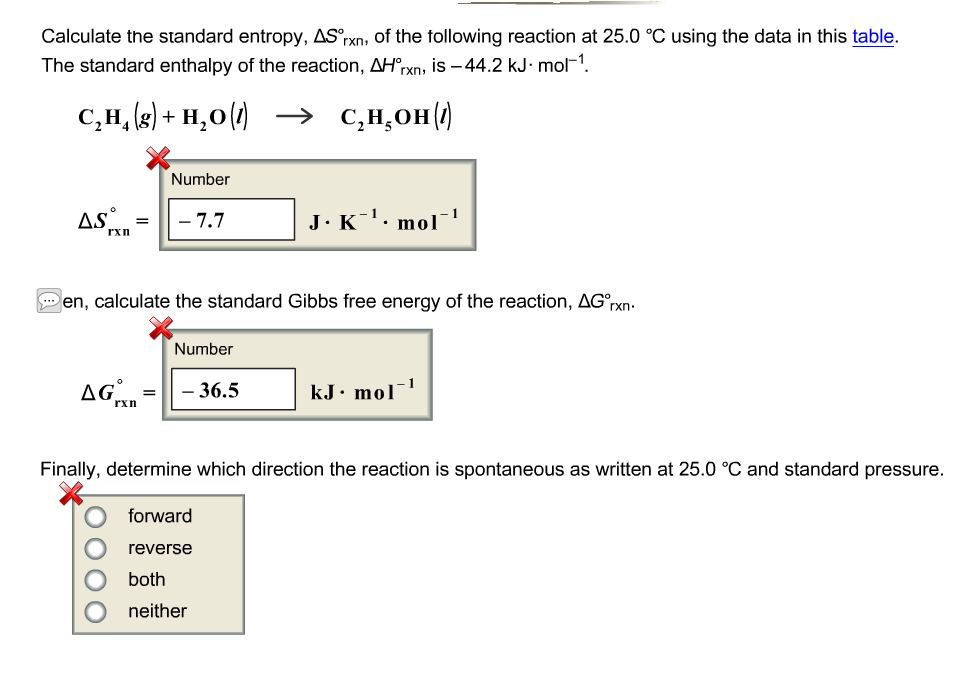


Thus we can find Δ rU = U prod - U reac = q for the reaction. The volume is constant and no work bas been carried out. The temperature inc:rcase of the water upon the reaction is measured, and with the knowledge of the heat capacity of the calorimeter, the amount of heat evolved (-q) can be calculated. The teaction is ignited by heating electrically a small piece of resistance wire. An organic compound and an excess of oxygen are placed in a closed container immersed in a water bath (a bomb calorimeter). In the field of organic chemistry combustion reactions are of great interest. If we arrange an experiment such that no work is carried out during the chemical reaction, we will have Δ rU = q. This change cannot be measuted directly, we can only measure the mechanical work performed on the surroundings and the heat received by the surroundings. When a chemical reaction takes place, there will be a change in the internal energy of the system. The conventional enthalpy of formation of a single ion is based on the standard that Δ rH 0(H +,aq) = O. The enthalpy of formation of single ions listed in tables are based on the convention that the enthalpy of formation of H +(aq) is arbitrarily given the value zero. In the solution of an electrolyte we always have both positive and negative ions. The temperature dependence is determined by the change in heat capacity by the reaction.Īn aqueous solution is always electrically neutral. The enthalpy change of a reaction is temperature dependent. Enthalpies of formation in the standard state are listed in tables. In order to calculate and compare enthalpies of reaction (which have absolute values) standard states are introduced. There is no absolute value for the enthalpy of a system. Thus we may choose any convenient path in order to calculate the enthalpy of reaction. experimentally in a calorimeter at constant volume (q = Δ rU), or at constant pressure (q = Δ rU).Įnthalpy is a state function, and the enthalpy of reaction is independent of the reaction path.When a chemical reaction takes place, heat (positive or negative) is absorbed by the system. 7 STANDARD ENTHALPIES OF FORMATION OF IONS IN DILUTE AQUEOUS SOLUTIQNS.6 TEMPERATURE DEPENDENCE OF ENTHALPY OF REACTI0N.5 ENTHALPY OF FORMATION .STANDARD STATE.


 0 kommentar(er)
0 kommentar(er)
